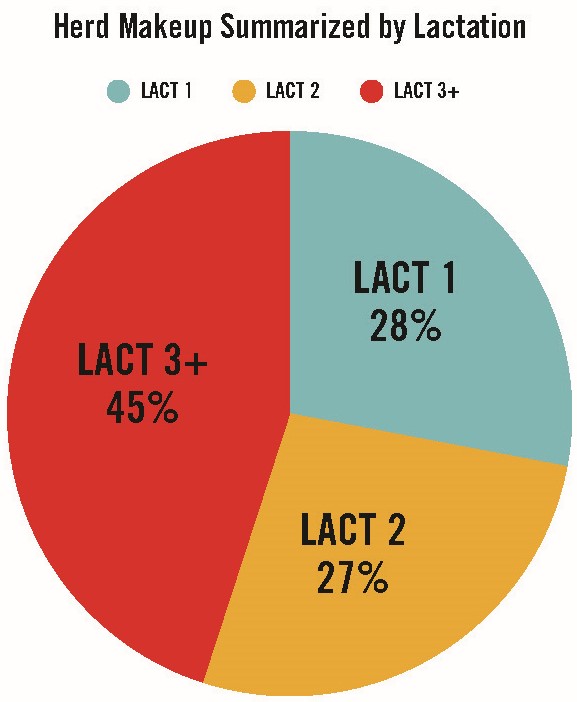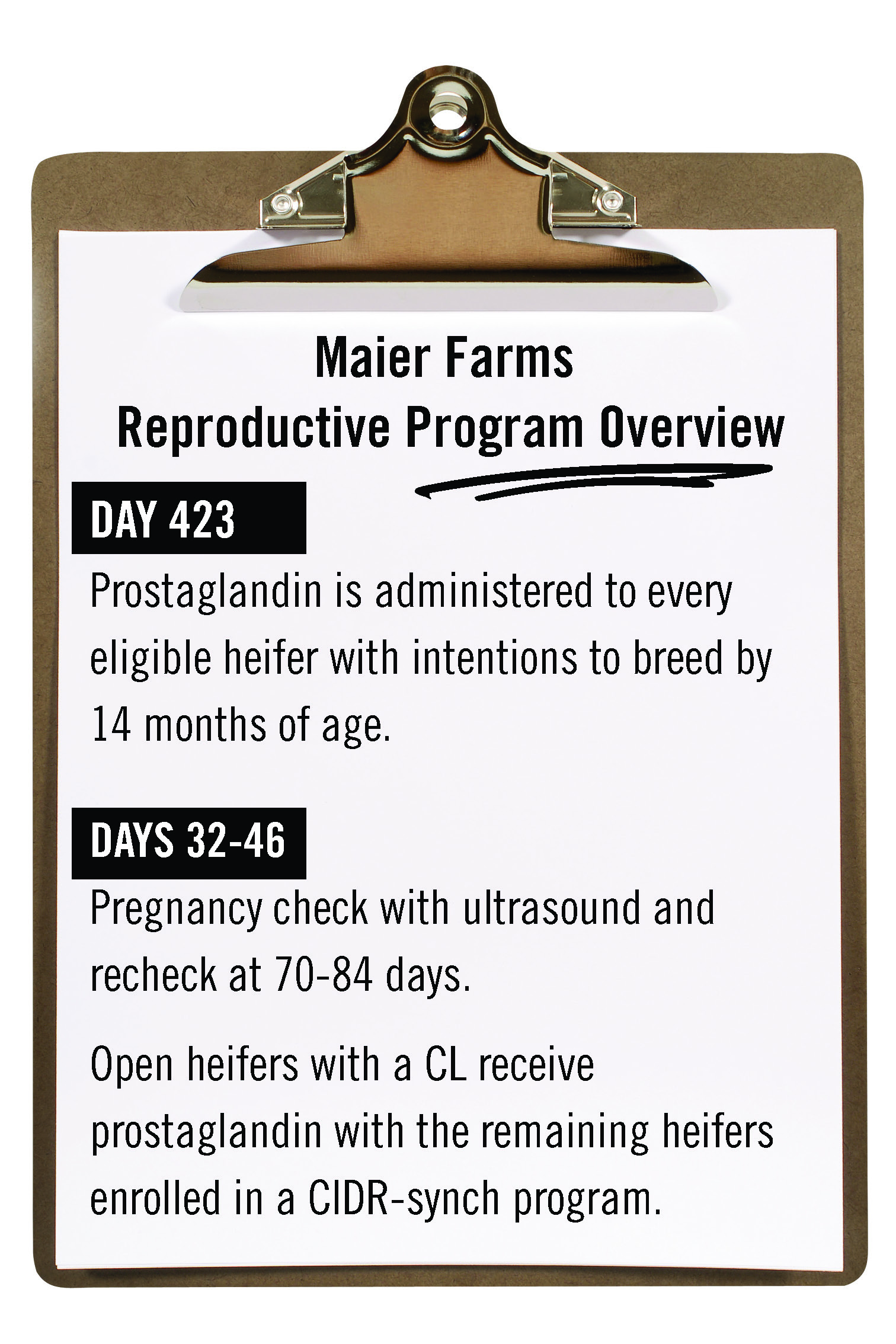Sire selection
Fertility potential begins long before the breeding pen, in fact, it begins before the ovum is fertilized when service sires are being selected. Referencing Daughter Pregnancy Rate, Cow Conception Rate, Heifer Conception Rate and Fertility Index values when selecting sires is critical for building a solid foundation genetically. Maier Farms Herd Manager Max Shenkenberg says, “We were early adopters of NxGEN® and as the lineup continues to expand, it provides us with lots of options. Our milk is shipped for cheese production and components are extremely important.” Shenkenberg explains that while components receive high priority in their sire selection criteria, DPR is currently used as a tie breaker. Along with components and fertility, health traits continue to hold space as Shenkenberg says, “We need lots of lactations out of our girls to pay for their investment.”

The herd has a 32% cull rate with low production being the main reason for culling. “We primarily cull cows for low production. These are typically animals that receive a DNB notation or are short bred and dip below a profitable amount of production.
Our next reasons for culling would be sick/injury, mainly slips and falls, swollen hocks or a prognosis that doesn’t look good. Our third reason for culling is mastitis. We are using less antibiotics and preventatives for dry cow treatments
and are less forgiving on chronic animals.”
It begins at birth
Once a foundation of elite genetics has been established, Maier Farms begins to build their heifers up for a profitable future. Healthy and thriving calves mature into fertile heifers and profitable cows. The Maier team recognizes this and prioritizes
exceptional calf care from the second a heifer hits the ground.
They will be the first to admit that their maternity pen and calf care protocols aren’t unique or special, but they strive for consistent protocols, records and communication among team members. Maier says, “There’s no silver bullet.
It’s about consistency.”
Their consistency is evident with an extremely low non-completion rate of 5.54%. “We don’t have many heifers not make it to the milking herd, and that’s a testament to creating healthy, fertile animals. Excellent comfort and having proper ventilation are critical so that once they are checked pregnant, they stay pregnant,” said Shenkenberg.
 Keeping protocols a priority
Keeping protocols a priority
Maier’s views on consistency are applicable to breeding-aged protocols as well. “The best thing we can do with heifers to achieve high-pregnancy rates is to have a high-service rate,” says Shenkenberg. “We need to get them
to show heats and get semen in them. Consistent heat detection is critical – doing it at the same time every day. We have an aggressive approach, and it works.”
While they maintain a low non-completion rate, they do however cull heifers that pass the four-service threshold or abort in the pregnant pen as they have identified these heifers as more of a risk than an asset to their herd’s profitability.
Skills and patience
A program is only as good as its people – training and compliance are critical. Shenkenberg and Maier attribute the herd’s reproductive success to their fellow team members. Maier emphasizes training around reproductive success, including
heat detection, hormone compliance and artificial insemination. Shenkenberg shared that A.I. training can be challenging because you don’t know your accuracy until that cow is pregnancy checked at 32 days. He encourages team members often
by saying, “Be patient, resilient and intentional and the results will follow.”
“The herd’s 77% submission rate is a testament to their training and compliance programs,” says Susie Martin, genetic consultant, CentralStar Cooperative. “Submission rate is the percentage of eligible cows bred within a specific timeframe. A high submission rate is crucial for achieving good reproductive performance. The team at Maier is breeding cows in a timely manner and therefore maximizing their chances of creating pregnancies.”
Tailormade consultation
In addition to genetics, Maier Farms leverages the tools and consultation services provided by their local Select Sires member cooperative, CentralStar Cooperative. While profitability through longevity is their ultimate goal, there is a laundry list
of things that need to fall into place to achieve that goal, some of which include creating the right number of heifers from the right cows for replacements. Martin uses Select Sires’ intuitive inventory calculator, Optimal Genetic Pathways,
to determine usage of sexed NxGEN and conventional beef semen, as well as the appropriate number of services.
The herd went through an expansion a few years ago. The strategy included growth from within and also purchased cows. This expansion led to slugs of calvings that put pressure on their heifer pens and management. Martin helped tighten and fine-tune the strategy to allow for more consistency.
Martin continues to run routine reports and share with the management team. “You have to be proactive and not reactive when it comes to reproduction. The results are down the road, they are not instantaneous, but having reports from Susie in our
inboxes is a critical part of the decision-making process,” says Maier.